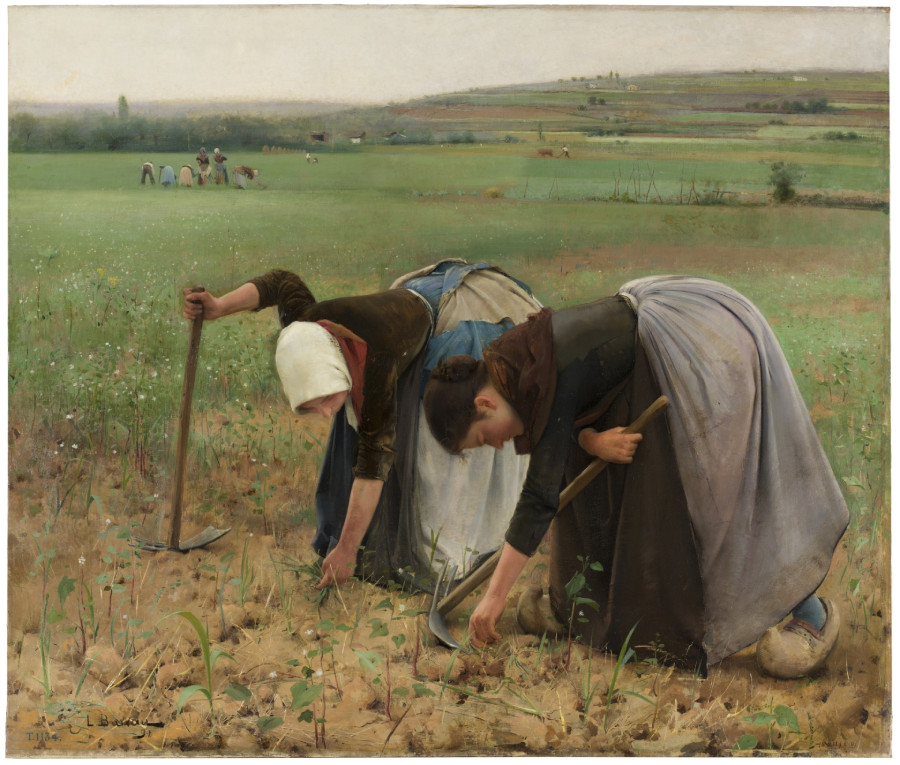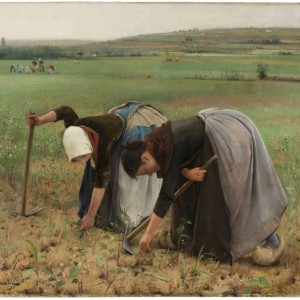Art and Social Change in Spain (1885-1910)
Museo Nacional del Prado, Calle Ruiz de Alarcón 23, Madrid, Spain
May 21, 2024 - September 22, 2024
 |
Art and Social Change in Spain (1885-1910)Museo Nacional del Prado, Calle Ruiz de Alarcón 23, Madrid, SpainMay 21, 2024 - September 22, 2024
In the period between the liberal governments of 1885 and 1910 decisive transformations took place in Spain with regard to the modernisation of the country, in a way comparable to the rest of Europe. Artists ceased to depict historical subjects in order to focus on contemporary life, with the result that their works became eloquent testimonies of those changes. Influenced by photography, Spanish painters aimed for objectivity in representation, adopting a naturalistic style similar to the one that had triumphed in France and other countries but with a distinctive national identity in some works thanks to the study of Velázquez and his role as a prestigious point of reference. Many of those works were presented at the National Fine Arts Exhibitions, from where the State acquired a significant number of them, explaining why the Museo Nacional del Prado houses the most important collection of social painting in Spain. Twenty of these paintings, most of them of large format, constitute the core of the exhibition. The first that the Museum has devoted to this subject, it is particularly relevant given the presence of works of this type in its collections which are not, however, extensively represented in the permanent display and are thus insufficiently known. In addition to painting, sculpture and the graphic arts are also included, as well as photography and film, which together played the most significant role in configuring the image of the era. The themes chosen to articulate the sections of the exhibition encompass different aspects of contemporary life, including those which due to their lack of beauty, supposed indecorousness, apparent triviality or seeming absence of interest had barely been considered before. They include industrial and women’s work, education, illness and medicine, workplace accidents, prostitution, emigration, poverty and ethnic and social marginalisation, colonialism, strikes, anarchism and demonstrations. Other themes which, in contrast, had a long tradition in painting, such agricultural labour, the work of seafarers, religion and death, were now seen in a new light and for this reason they are also present in the selection. The exhibition analyses the diversity of interpretations of all these themes, the relationship between different artistic fields, such as photography, illustration and painting, and the crisis of the system of naturalistic representation following the triumph of its most notable exponents, such as the brothers Luis and José Jiménez Aranda, Vicente Cutanda, Joaquín Sorolla, Santiago Rusiñol and Ramon Casas. Social art of the first generation flourished between the Paris Universal Exhibitions of 1889 and 1900, at which two Spanish painters, Luis Jiménez Aranda and Joaquín Sorolla, received the medal of honour respectively. Although it continued to be cultivated by other artists until 1910, naturalist proposals were replaced by others of a more expressive nature. Simultaneously, the influence of Velázquez declined and was progressively replaced by that of El Greco among the innovative artists who were also aware of the transformations that had taken place elsewhere in Europe. The first important example was Darío de Regoyos followed, after 1900, by Francisco Iturrino, Ricardo Baroja, Hermen Anglada-Camarasa, Isidre Nonell, Evaristo Valle, Joaquim Sunyer, Pablo Gargallo, Pablo Picasso, Juan Gris and José Gutierrez Solana. Ignacio Zuloaga and Julio Romero de Torres also pursued new directions from markedly individual viewpoints that revealed more interest in certain aspects of the art of the past. Filmmaking had taken the potential for representing life to its furthest extent, with the result that artists abandoned large formats and objectivity and pursued a radically modern orientation which took into account the revolution brought about by Post-Impressionism in Paris. It was there that painters, sculptors and graphic artists, including numerous Catalans and Basques, found an appropriate channel to develop their ideas with greater freedom and outside the context of the academy. With regard to the present exhibition, the fact that they continued to depict the same themes previously favoured by the naturalists makes it possible to highlight the rich variety of approaches to those subjects in a short period of time which is consequently of great interest and significance.
|


